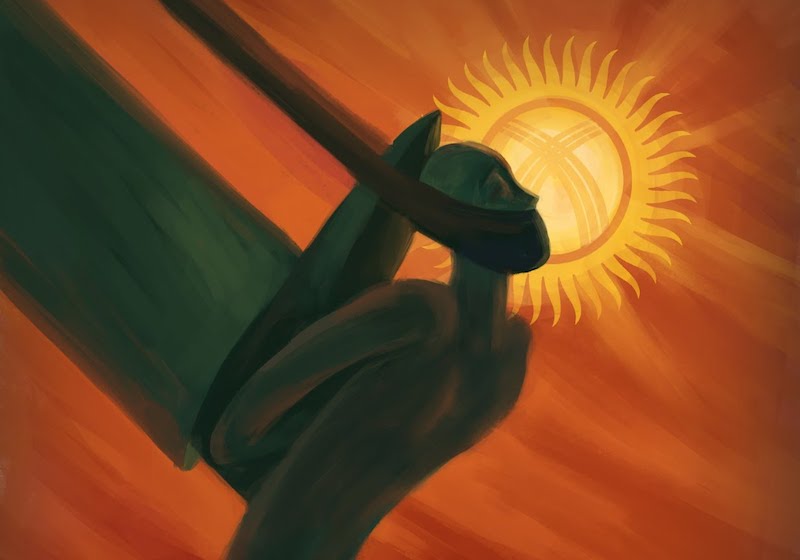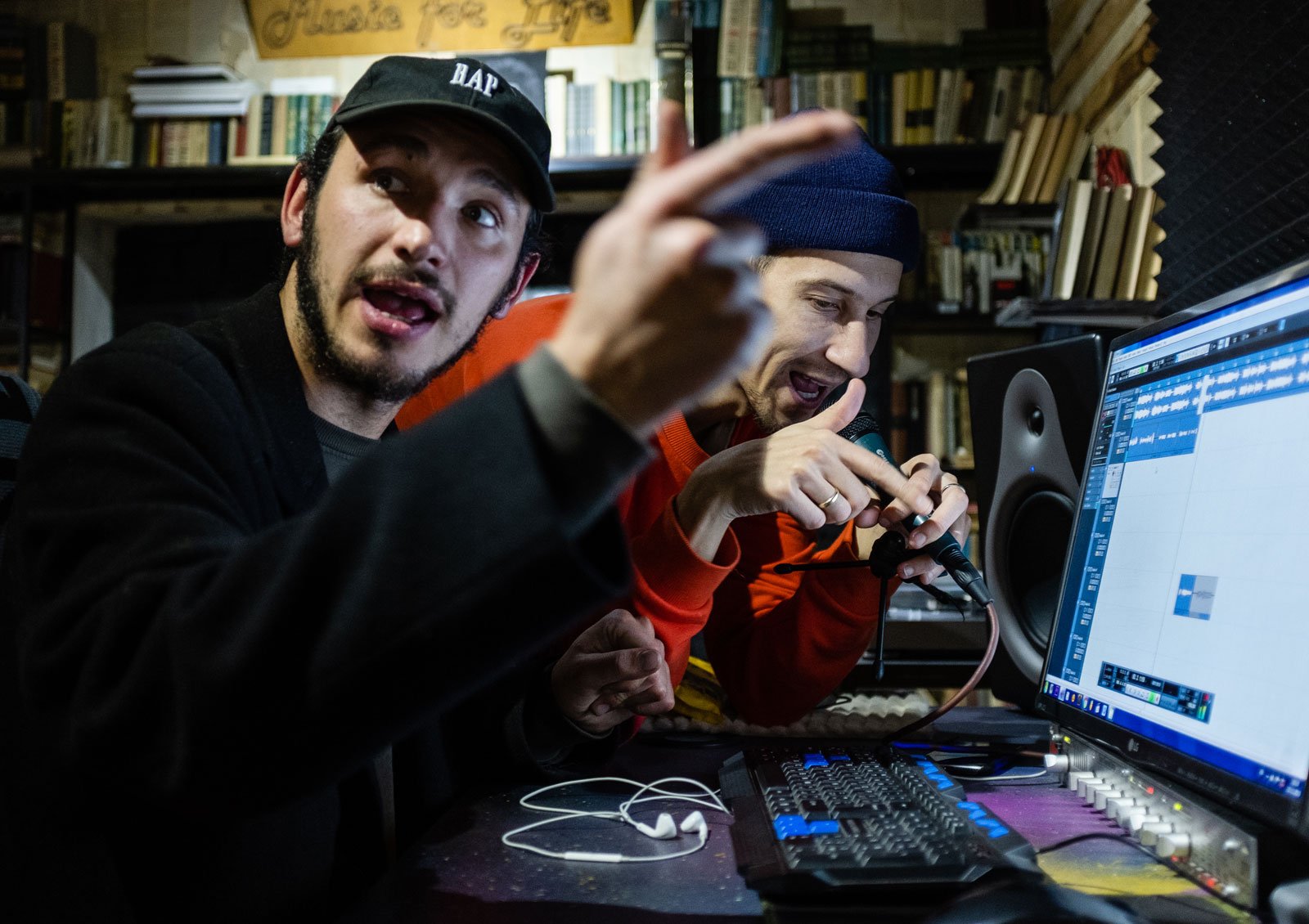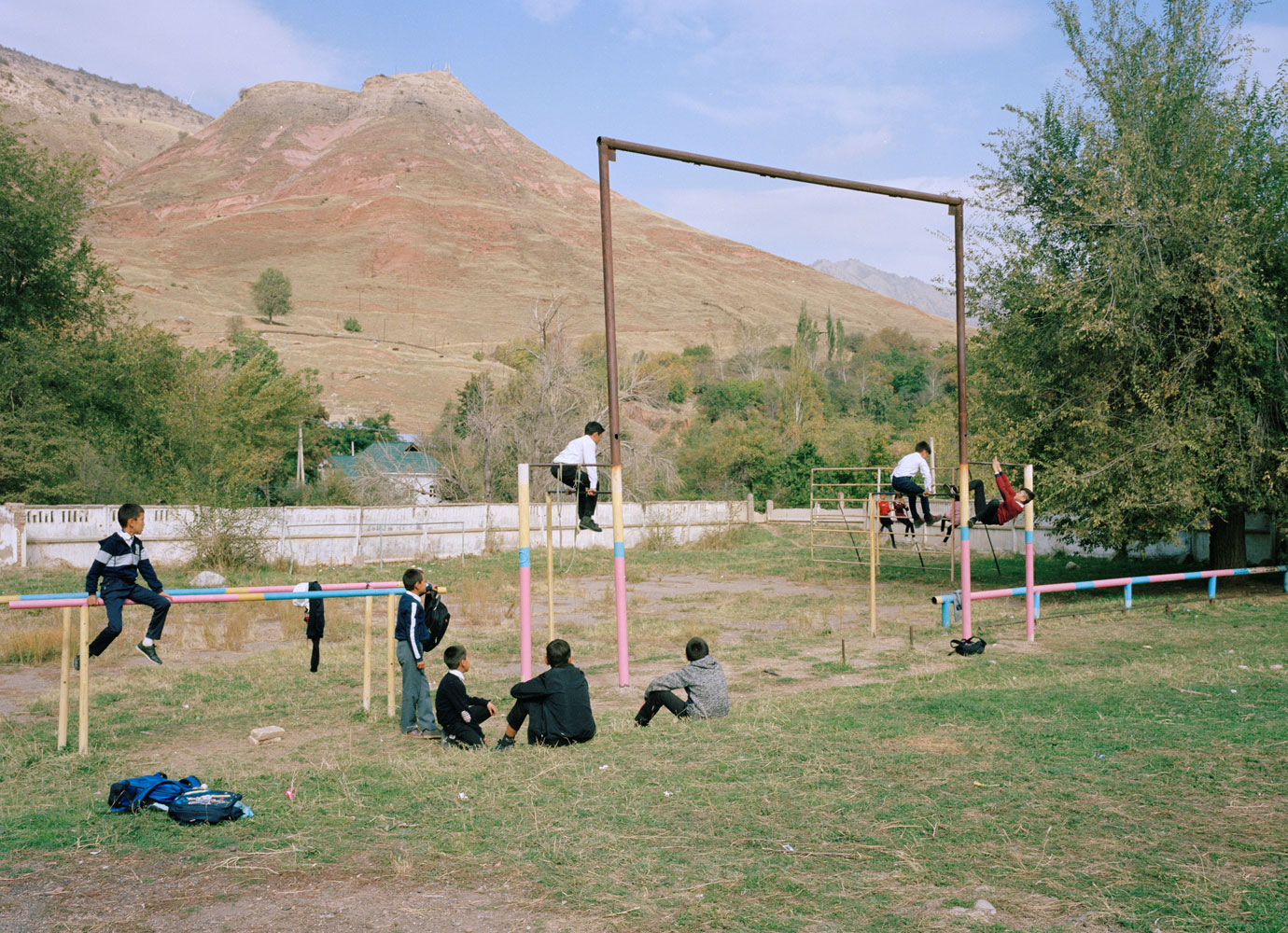Mightier than the sword: the political artist capturing rage and resistance in Kyrgyzstan

Little happens in Kyrgyzstan that escapes the pen of artist Tatyana Zelenskaya. Simple and slightly rough, but imbued with creative symbolism, gentle surrealism, and rich colours, her work is in many ways reminiscent of Soviet poster art.
But Zelenskaya’s work is instead a mirror onto a very modern Kyrgyzstan, often confronting series topics such as violence against women, human rights, and civic activism.
“I did not seek to specifically touch on politics [in my art]. It seemed to me that it was this very distant topic that was just unpleasant for everyone,” says Zelenskaya, who graduated from the Kyrgyz National Academy of Arts with a degree in industrial graphic design in 2008. She began working with her husband, an animator, to create films on social issues such as bullying, domestic violence, and LGBTQ+ rights, alongside commercial projects. Before long, the pull of politics became inescapable.
A protest in Bishkek
“The more I worked on these social projects, the more I understood how society and politics were connected to each other,” she says. “It is impossible to turn a blind eye to politics. I don’t make work on these topics because I want to, but because I have to, because politics concern everyone.” As well as publishing on social media, she began working with Kloop, Kyrgyzstan’s leading independent media outlet — slowly creating her visual narrative to accompany many of the country’s most important stories. “I always have a sense to fight against injustice,” she says.
Zelenskaya’s artworks are created uses monochrome fills, before part of each image is painted over with colour. She says that she continues to experiment with shape, colour, and volume, but her work is heavily influenced by her own experience with synaesthesia: a neurological trait or condition that results in a joining or merging of senses that aren’t normally connected.
“I have very powerful colour synaesthesia,” says Zelenskaya. “As a child, I thought that everyone saw the world — objects, letters, people — through colour. As I got older, I was wildly surprised that this wasn’t the case. For me, any word or movement is conveyed in colours.”
The work that Zelenskaya made during the pandemic — a time which also saw the Kyrgyzstani government forced to resign amid protests and accusations of vote rigging — is painted in bright red. “In the autumn of 2020, when there was a revolution, a coup; when there were pogroms, my work took on this very dark, rich red. That time for me was painted in red, red as fire, as blood, as the colour of the Kyrgyzstani flag. When I looked on social media, it was all in red, and there was this sense of everything warming up. It was like I was being purified through art.”
Kyrgyzstani politician Raiymbek Matraimov depicted making puppets dance outside the country's parliament building
This relationship with colour gives Zelenskaya her own sense of symbolism, although this is something she is also keen to embody elsewhere in her work, providing a universal language to her work. “My studies influenced my perception of symbols,” she says. “When I drew logos and posters [at college], I was taught to speak the language of symbols. And I’m looking for references from movies and cartoons here, I like how they merge into one whole.”
Perhaps the most enduring image or symbol in Zelenskaya’s work is that of a woman or girl. The struggle for women’s rights in Kyrgyzstan perhaps remains Zelenskaya’s most constant subject, and her works draw heavily on the female gaze.
A child sitting on the doorstep. The text reads: "Dad has gone away to work in Moscow"
“Violence against women in Kyrgyzstan has worsened during the pandemic,” she says. “I am constantly reading different stories: one where a husband hung car tires around his wife’s neck and doused her in freezing water; another where a 19-year-old girl, Burulai, was kidnapped into a forced marriage [an illegal yet persistent practice in Kyrgyzstan] but was then stabbed by the same man while she was at a police station where she was supposed to be safe and protected. I will never be able to just take those things calmly. Last year, when women’s rights protesters gathered in Bishkek on International Women’s Day, we were taken away by law enforcement agencies, as if we were criminals. But next year we’ll be out again. We are not afraid.”
Such issues, however, have a complicated regional history: not everyone is happy to see an ethnic Russian artist such as Zelenskaya take on problems which disproportionately affect Kyrgyz women. “I often hear that I have no right to write and draw on this topic, because I am Russian,” she says. “But I grew up here. This is my homeland. And I perceive the problems that exist in society as my own.”
An image of a woman with a tyre hung around her neck, a reference to a real life abuse case that made headlines across Kyrgyzstan
Away from the newspaper pages, there is also a gentler side to Zelenskaya’s work. Her Instagram feed is filled with drawings dedicated to the Kyrgyzstani capital of Bishkek, its streets filled with high-rises and the creeping wash of warm sunlight, rendered free of people and cars. They show her “own Bishkek”, removed from social turmoil and the grinding realities of a metropolis home to 2 million people.
But there is no question of Zelenskaya stepping down from her role as a political artist for now. “Maybe I will have some kind of creative burnout from my political cartoons at some point, and then I will do something. But that won’t happen today,” she says. “You can’t help but react to politics, and you can’t shut down either. Almost everything I draw is socio-political, and all my projects are important to me. I would even draw more. I just don’t have enough time.”


